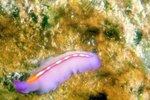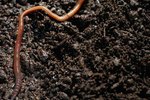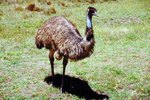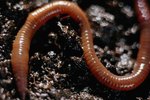
By far the most diverse kingdom in the scientific classification system, Animalia contains all types of creatures from the slimy earthworm to humans. The classification system arranges organisms in the following order: kingdom, phylum, class, order, family, genus and species. As the classification goes down from kingdom, the creatures are more closely related; for example, species within the same genus are more closely related to each other than to those of other genera.
Basics
Animalia, also known as Metazoa, is the most diverse kingdom with an estimated nine to ten million different species inhabiting the earth. Some of the differences between Animalia and the other kingdoms is that most animals produce sexually; have an interior digestive system and that they're multi-cellular unlike the uni-cellular protozoans.
Variety
The vast differences in the animal kingdom also make it unique among the other classification kingdoms. Animals range from the microscopic creatures consisting of only a few cells to the largest living animal, the blue whale, which weighs over 20 tons on average. The most diverse and largest class, Insecta, contains around 1 million named species and an estimate of several times that number that remain undiscovered.
Reproduction
Most members of Animalia reproduce sexually by means of sperm and eggs. While the process can vary between different types of animals, most share the same development sequence of an embryo developing after fertilization. Embryo development is either oviparous, in which the embryo develops externally; ovoviparous, in which the embryo develops internally but the mother does not contribute nutrition; and viviparous, in which the embryo develops internally and the mother contributes nutrients to the embryo. Some insects store sperm for later use; some types of animals fertilize the eggs after they've left the female's body.
Heterotroph and Digestion
Animals are heterotrophs, which means an organism that relies on other organisms for food. In short, animals eat other organisms to stay alive. Most of the creatures in the kingdom Animalia ingest food through a mouth and digest it inside their bodies. For example, food goes in the body through the mouth and then begins being digested through the stomach and the digestive tract.
References
Photo Credits
-
Jupiterimages/Photos.com/Getty Images
Writer Bio
With a professional background in gardening, landscapes, pests and natural ecosystems, Jasey Kelly has been sharing her knowledge through writing since 2009 and has served as an expert writer in these fields. Kelly's background also includes childcare, and animal rescue and care.




